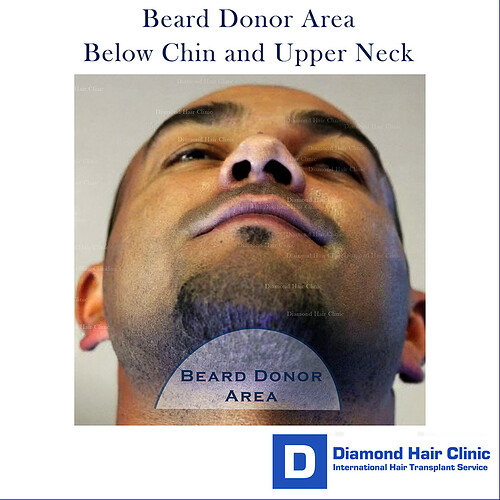Body Hair As A Donor Source In Hair Transplantation
Why Is Caution Necessary in Body Hair Transplantation?
In my role as a hair restoration surgeon, I prioritize meticulousness and recognize the significant challenges that accompany the use of body hair as a donor source in transplant procedures . I’ve found that extracting follicles from non-scalp regions is not a straightforward process; each step demands a nuanced understanding of follicular characteristics.
In my work at Diamond Hair Clinic, we meticulously select the donor hair from the dense, permanent zone at the rear and sides of the scalp, also known as Safe Donor Area, a region known for its resistance to DHT. This hormone is a key factor in Androgenic alopecia, and the resistance of these hair follicles ensures the transplanted hair maintains its integrity over time.
Before considering the option of body hair transplantation, which often presents challenges such as lower density and varied texture, we exhaustively evaluate all non-surgical treatments. These include PRP therapy, which leverages the patient’s own platelets to stimulate hair growth, and medications like Finasteride or Minoxidil, known for their effectiveness in hair loss management.
Our approach is to provide a comprehensive hair restoration solution, balancing surgical expertise with the latest advancements in hair loss treatment, to ensure our patients receive the most effective and lasting results.
The divergence in growth cycles between body hair and scalp hair can manifest in the transplanted hair, leading to variations in length and a less uniform appearance. Moreover, the angle and direction of body hair growth differ markedly from that of scalp hair, necessitating an advanced skill level to ensure the transplanted hairs blend seamlessly with existing ones. This is particularly crucial in achieving a natural-looking hairline and overall aesthetic.
The texture of body hair can indeed be quite variable and often does not match the recipient’s scalp hair in terms of color, thickness, and growth patterns. This difference can potentially make the transplanted hair stand out or look less natural, necessitating additional styling or grooming efforts to harmoniously blend the body hair with the existing hair on the scalp.
It’s also worth noting that body hair is more liable to scarring, and the healing process can differ significantly from that of the scalp. The extraction of body hair may result in more visible scars or alter the skin’s texture in a way that can be particularly challenging to conceal, especially if the patient has a predisposition to forming keloid or hypertrophic scars. This is an important consideration in patient counseling, as these types of scars can be aesthetically unpleasing and difficult to treat.
Furthermore, the success rate, or the yield of transplanted body hair is significantly lower compared to scalp hair. This is partly due to the inherent fragility of finer body hair follicles, which are more susceptible to trauma during the extraction and transplantation.
Due to these complex variables, body hair transplantation should be cautiously approached and reserved for cases where scalp donor hair is insufficient. Patients must be thoroughly examined, their hair loss patterns evaluated, and their expectations moderated according to the realistic outcomes of using body hair as a donor source.
Only through rigorous discussion, careful planning, and skilled hands can body hair transplantation be a viable solution for those with limited scalp donor hair.
